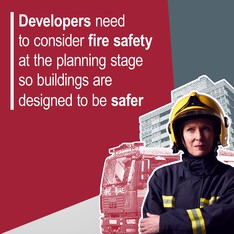If you’ve had a go at reading the Building Safety Act, well done!! It was described to me this week as a Lawyers Paradise, it is a complex document that cross references a myriad of different Acts and Secondary Regulation and particularly the latter is yet to be fully written. We’ve even seen the documents like The Building (Higher-Risk Buildings) (England) Regulations 2022 (which included the provisions for how the Gateways are to be set out) temporarily withdrawn because they developed alongside the passage of the Building Safety Bill, but now don’t reflect the final Act, due to the number of amendments that the Government agreed to.
I spoke to the Regulator (HSE) at a Giri event this week and we talked about timings of the Gateways, the official timeline is looking at October 23 for the introduction of Gateway 2 and 3, but she went on to emphasise the gateways are about proving to the regulator you are compliant. But, the Act is in force now and ultimately the question we need to answer is “am I certain this building meets the functional requirements of the building regulations when it comes to structural and fire safety and will do for the next 15 years”. The Gateways are hard stop points that reassures the regulator that “construction won’t start until….” and “occupation will not happen until….” respectively. There is a lot of detail in “until”, but at it simplest it is “Construction won’t start until we know what we are about to build is designed to be safe and we have effective controls in place to ensure design is achieved” and “Occupation won’t happen until you can convince the Building Inspector that that is what you did”. They are also about information management to ensure that the buildings can be managed safely – we need to start thinking of the O&M Manual as something that is alive in the building than hidden in a drawer.
We’ve been exploring this all with members and colleagues across the wider construction sector, what it could mean in terms of timings and the order of things and when we need to be ready to work on the consultations around secondary regulations. One thing that has definitely been missed by some is that it is not just about residential work it is about working on buildings that are deemed higher risk. A lot falls into scope based on the premise that if the building is greater than 18m and has more than 2 dwellings in it, the entire building is in scope. So if you are working on a commercial building with a couple of penthouse flats on top, it is in scope (regardless of the fact your work may not touch those residential properties). The best guidance I have read so far is contained in the Guidance on Collaborative Procurement (link below), this includes some useful Q&A’s. We are working on our own core guidance and will be fleshing this out over the coming weeks, but if you have any questions don’t hesitate to get in touch and we’ll do our best to unpick things for you.
As an indication of where the problems might be, we can look to the lessons from Gateway 1, where HSE has raised fire safety concerns on planning applications for more than half of the higher risk buildings for which applications were made under the planning gateway one process. Whilst sadly much of this will be genuine areas of concern, others will be undoubtedly be fraggles in the process.
I remain convinced that the new Gateways are a force for good, they make single stage procurement processes less attractive and put the right emphasis on design development, pre-construction and change control as well as competence and planning, but there will inevitably be some pain in this and we do recommend you start looking out for any clauses that push the cost of delay into the supply chain where there is limited ability to control – remember this is start/stop do a failure to comply could leave e.g. a 12 week hole in a programme. FIS is picking this up with our legal advisors.
Department for Levelling Up, Housing and Communities Guidance on Collaborative Procurement
FIS high level summary of the Building Safety Act and what we know so far

